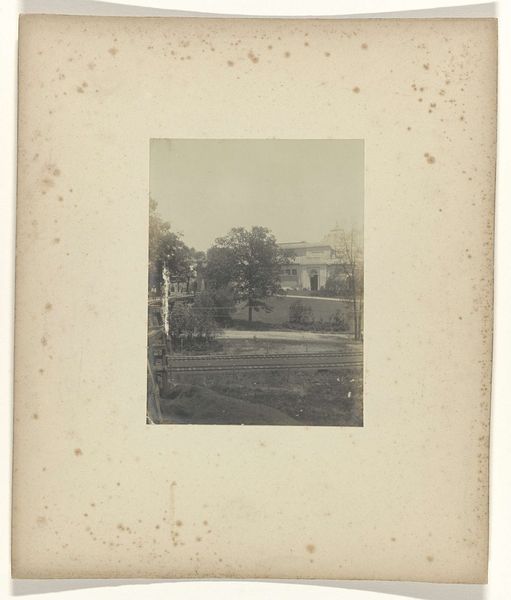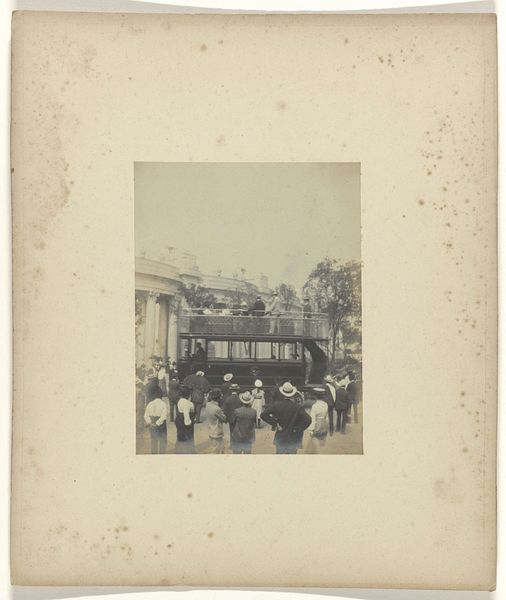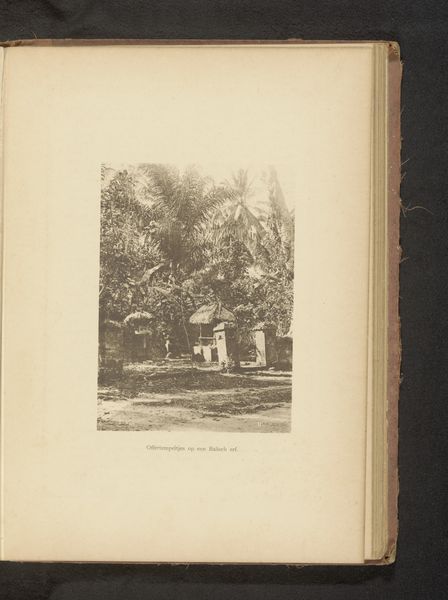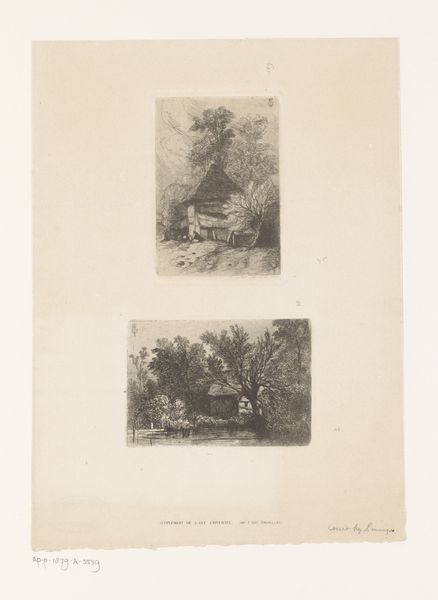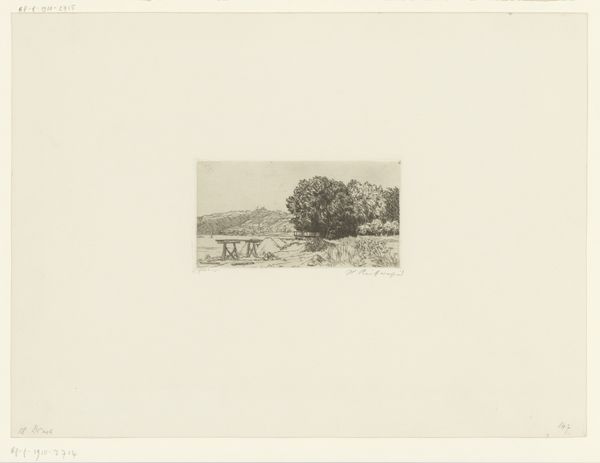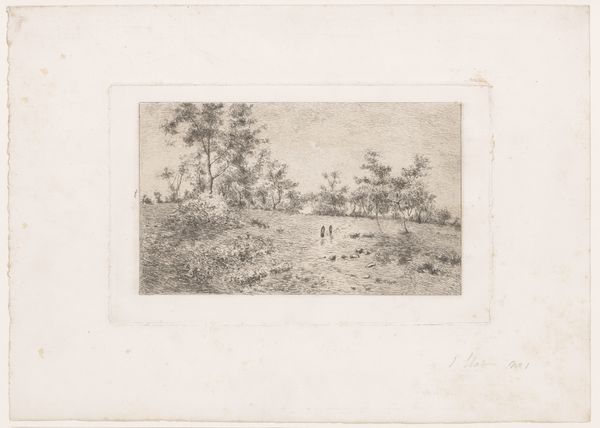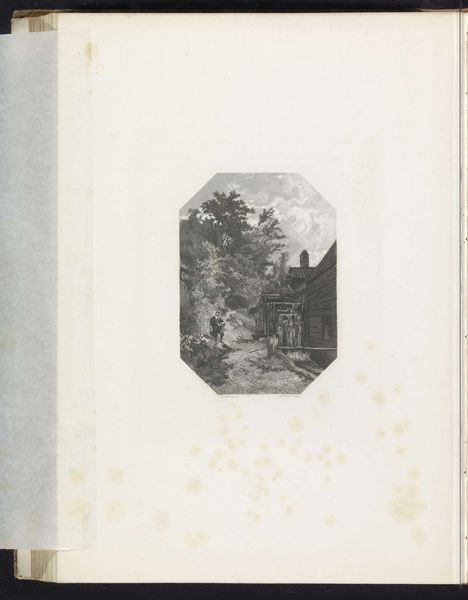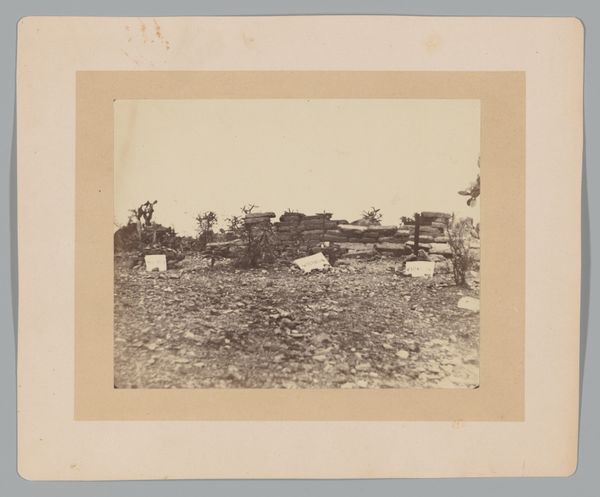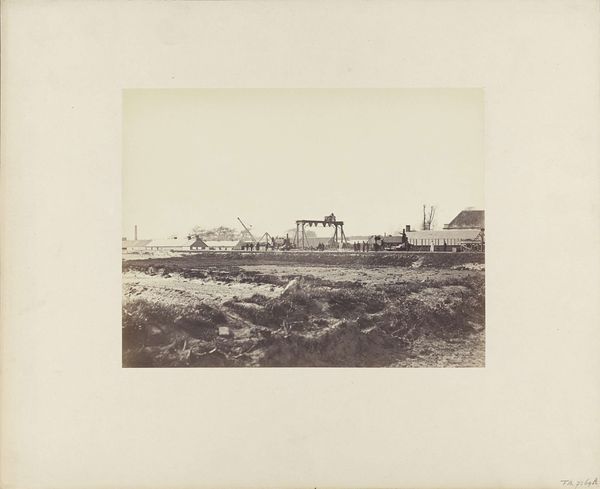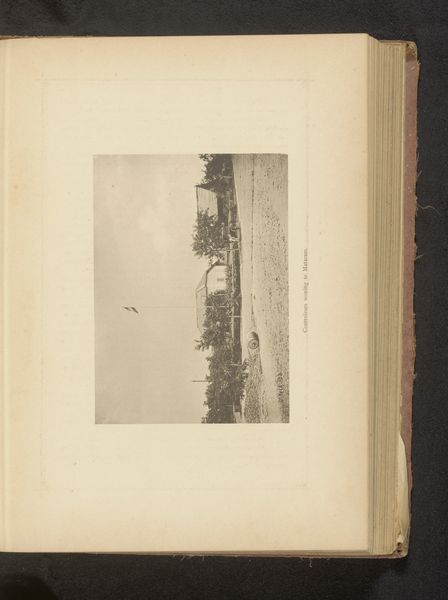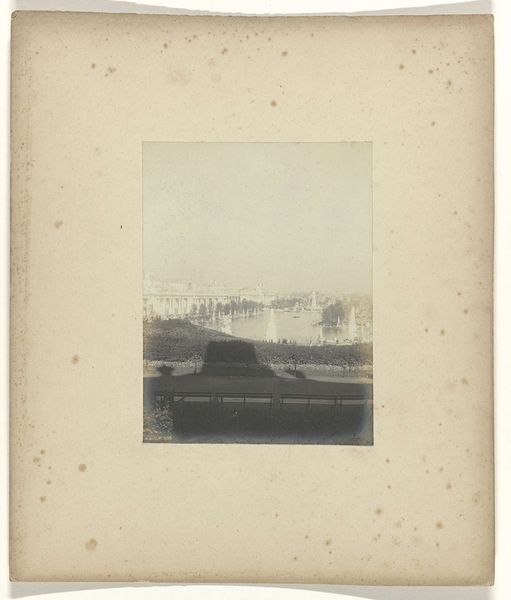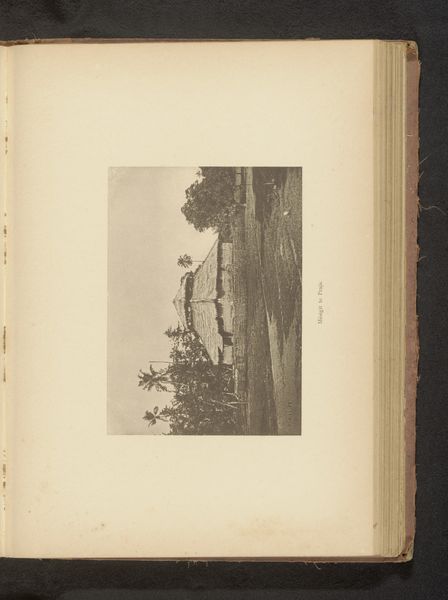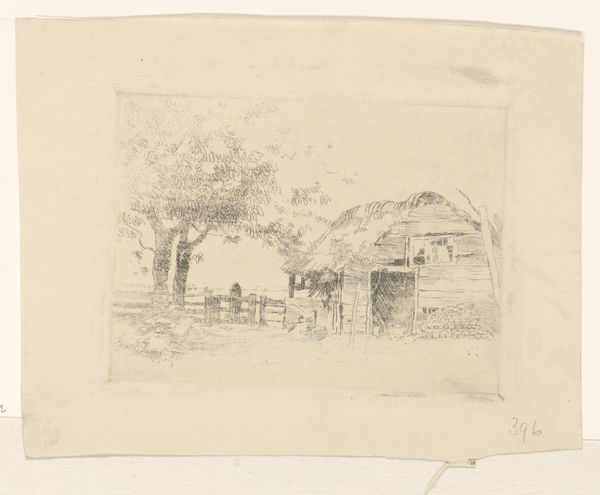
Backers staand voor het station van de Meramec Highlands t tijdens de wereldtentoonstelling in St. Louis (Louisiana Purchase Exposition), 1904 1904
0:00
0:00
photography, gelatin-silver-print, albumen-print
#
aged paper
#
toned paper
#
pictorialism
#
landscape
#
photography
#
gelatin-silver-print
#
cityscape
#
albumen-print
Dimensions: height 105 mm, width 83 mm
Copyright: Rijks Museum: Open Domain
Curator: Standing before us, we have a photograph titled "Backers standing in front of the Meramec Highlands station during the St. Louis World's Fair (Louisiana Purchase Exposition)," created in 1904. It's a gelatin silver print. Editor: It has a stillness. The muted tones, that antiquated sky, and those lone figures give off such a melancholic impression, a sort of temporal isolation. Curator: Notice how the artist utilizes pictorialist techniques; the soft focus lends it that distinctive ethereal quality, somewhat blurring the line between photography and painting. It elevates a commonplace scene to a study in light and texture. The photographer, Jan Schüller, understood depth in tones, playing with gradations in the albumen. Editor: I see a deliberate composition highlighting the intersection of industrial progress and nascent suburban expansion. The Louisiana Purchase Exposition presented an idealized version of American achievement while conveniently obscuring realities of racial segregation and colonial ambition, effectively building propaganda through selective history-making. Does the photographer's viewpoint subvert or endorse the dominant narrative of the period? Curator: It is subtle work; you have to read its delicate textures. The aged paper provides context itself, of course, bringing forward its historicity. Schüller used a masterful interplay of light and shadow, that directs our eyes toward the architectural lines of the station, framing it with a sensitive, nearly romantic gaze. Editor: While technically sound and beautifully rendered, photographs of this kind offer a potent reminder that historical documentation, no matter how seemingly objective, often carries a political slant. The decision to frame Backers standing by the station omits any mention of marginalized histories. What voices are notably absent from this celebratory vision? Curator: The photographer does manage to create a captivating mood; an early, golden Americana. Editor: But can such representations of a rose-tinted yesteryear be ethically separated from the power structures in which they emerged? Perhaps that station platform supported more than simply eager tourists... Curator: Indeed, these kinds of critical questions must accompany any historical interpretation, and I am pleased that our attention has turned towards them here. Editor: A fair point indeed, hopefully some food for thought.
Comments
No comments
Be the first to comment and join the conversation on the ultimate creative platform.
